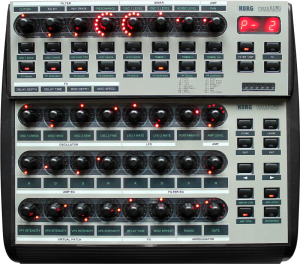The zip files provided here each contain the following:
- Overlays for SkinMan and ready to print.
- Preset SysEx files for BC Manager or direct transfer to the BCR.
- As it is not possible to tell the BCR how and where to include the MIDI channel number within the SysEx message, the byte containing the channel number must be hardcoded within the SysEx file. Refer to the ReplaceMIDIChannel_README textfile in the package for a search-replace string to change the MIDI channel to your needs.
- BC Manager SysEx Definition File (if applicable)
You may use the content of the packages for your own purposes. For distribution, please link to this site.
Related posts:
- BCR2000 Resource Pack for Roland JX-8P
For more information see Custom overlays for BCR
- BCR2000 Resource Pack for Synth In A Case
Synth In A Case is an ensemble for Native Instruments Reaktor.
You will have to manually assign the controllers used by the BCR preset.
 BCR2000_Reaktor_SynthInACase.zip
BCR2000_Reaktor_SynthInACase.zip - BCR2000 Resource Pack for Roland α-Juno
 BCR2000_Roland_AlphaJuno.zip
BCR2000_Roland_AlphaJuno.zip
Can be used with both α-Juno 1 and 2. - BCR2000 Resource Pack for KORG M1
 BCR2000_KORG_M1.zip
BCR2000_KORG_M1.zip
KORG M1 has different parametersets for single and double mode. This pack only supports double mode patches! - BCR2000 Resource Pack for KORG Polysix (KLC)
 BCR2000_KORG_KLC_Polysix.zip
BCR2000_KORG_KLC_Polysix.zip
For the KORG Legacy Collection Polysix VST plugin. Please note that not all controllers used in the patch are already assigned in the default controller map! - BCR2000 Resource Pack for KORG microKORG
- BCR2000 Resource Pack for KORG DW-8000

